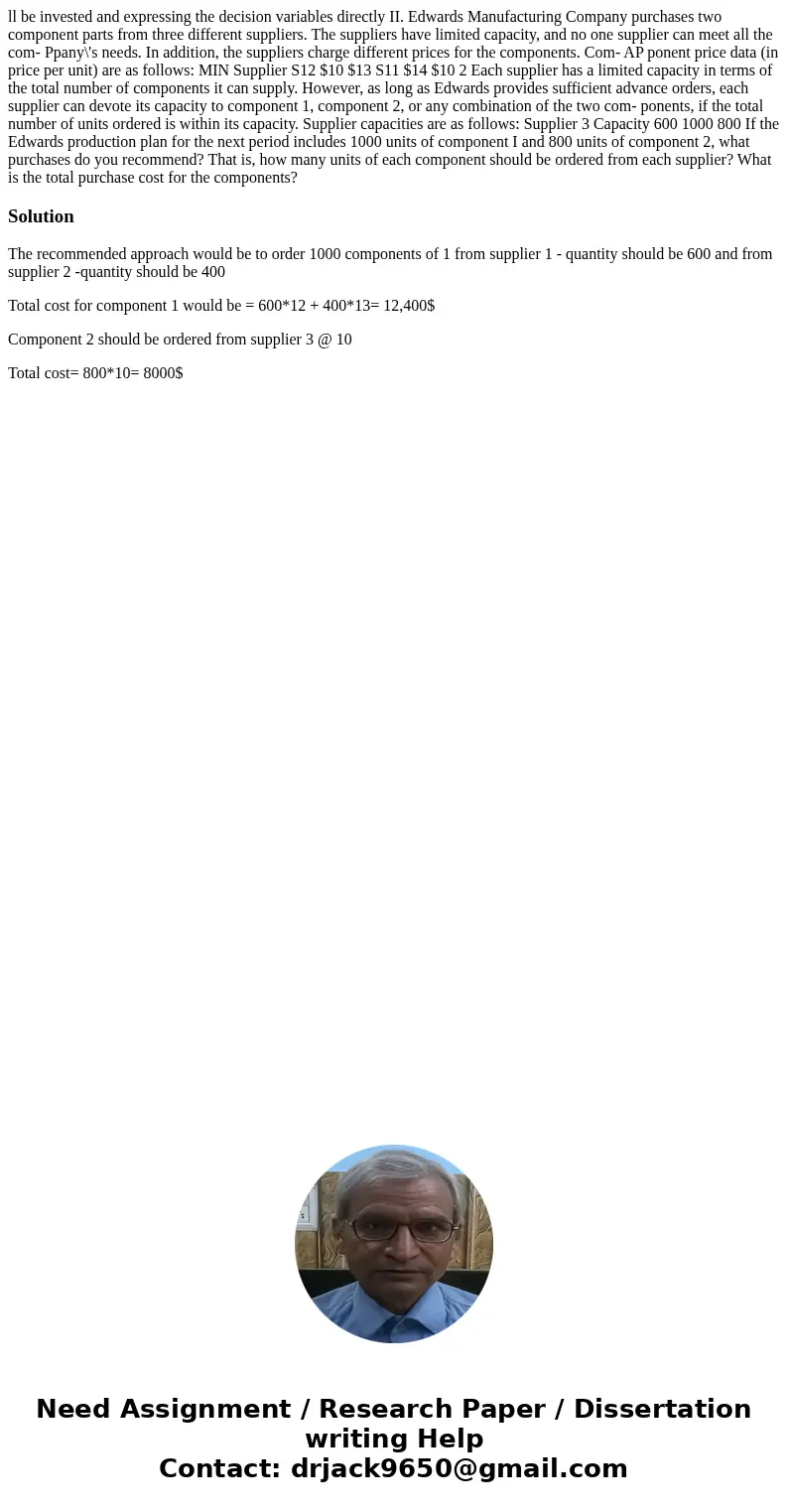ll be invested and expressing the decision variables directl
ll be invested and expressing the decision variables directly II. Edwards Manufacturing Company purchases two component parts from three different suppliers. The suppliers have limited capacity, and no one supplier can meet all the com- Ppany\'s needs. In addition, the suppliers charge different prices for the components. Com- AP ponent price data (in price per unit) are as follows: MIN Supplier S12 $10 $13 S11 $14 $10 2 Each supplier has a limited capacity in terms of the total number of components it can supply. However, as long as Edwards provides sufficient advance orders, each supplier can devote its capacity to component 1, component 2, or any combination of the two com- ponents, if the total number of units ordered is within its capacity. Supplier capacities are as follows: Supplier 3 Capacity 600 1000 800 If the Edwards production plan for the next period includes 1000 units of component I and 800 units of component 2, what purchases do you recommend? That is, how many units of each component should be ordered from each supplier? What is the total purchase cost for the components? 
Solution
The recommended approach would be to order 1000 components of 1 from supplier 1 - quantity should be 600 and from supplier 2 -quantity should be 400
Total cost for component 1 would be = 600*12 + 400*13= 12,400$
Component 2 should be ordered from supplier 3 @ 10
Total cost= 800*10= 8000$

 Homework Sourse
Homework Sourse